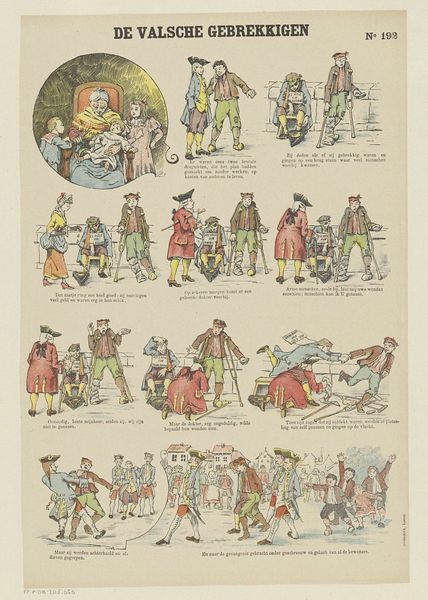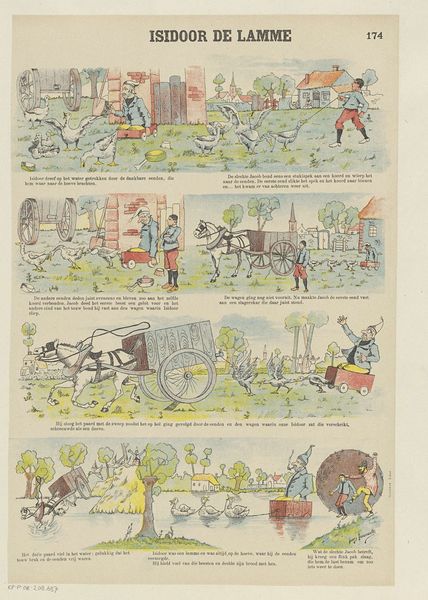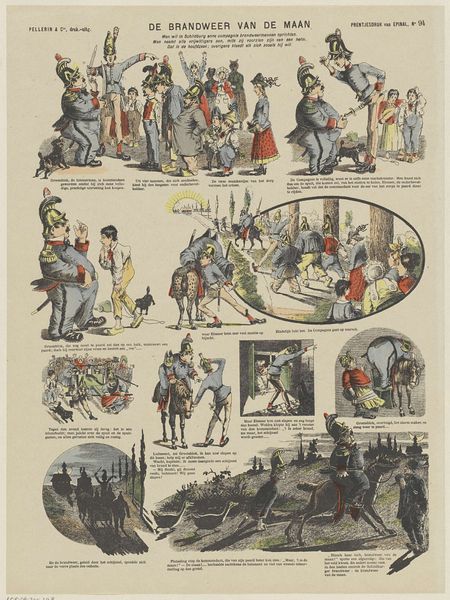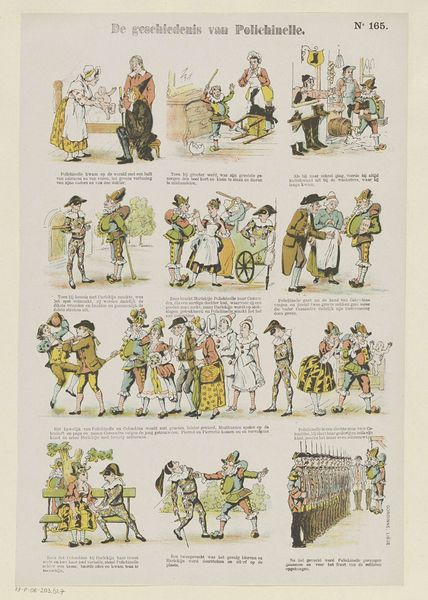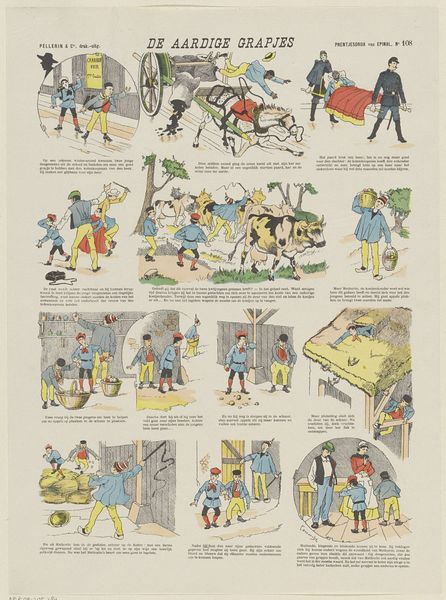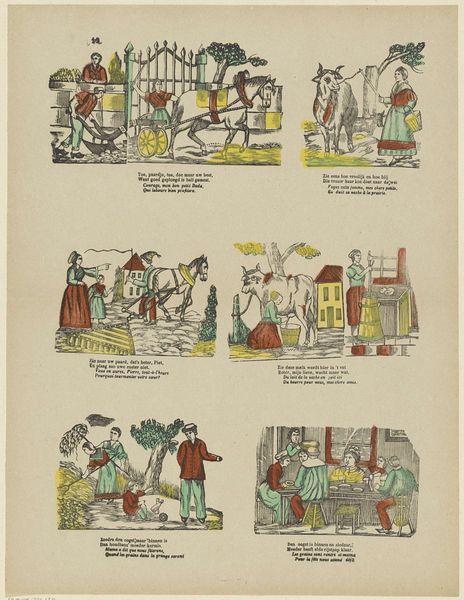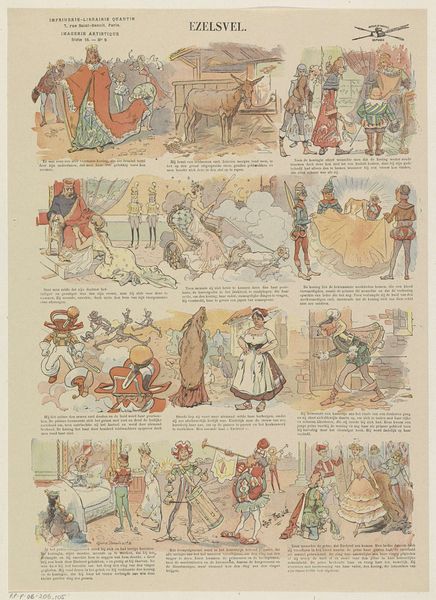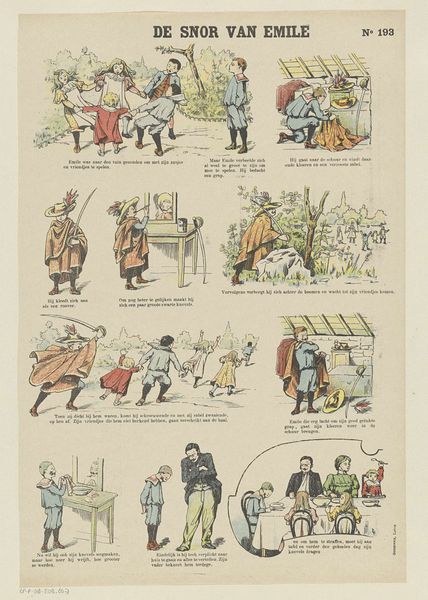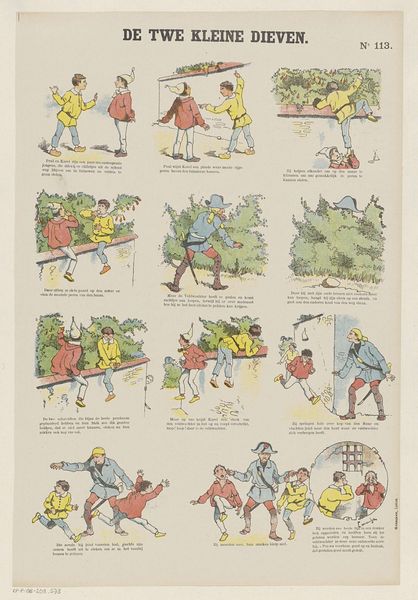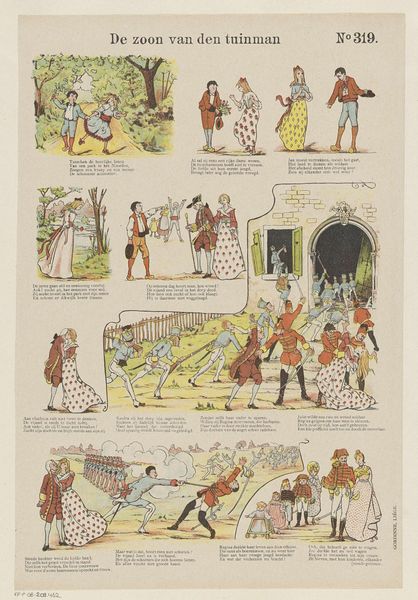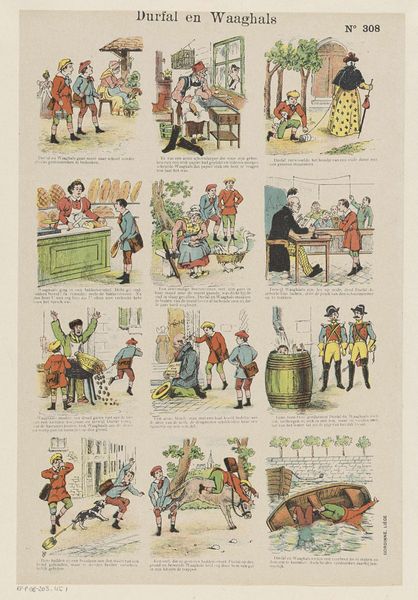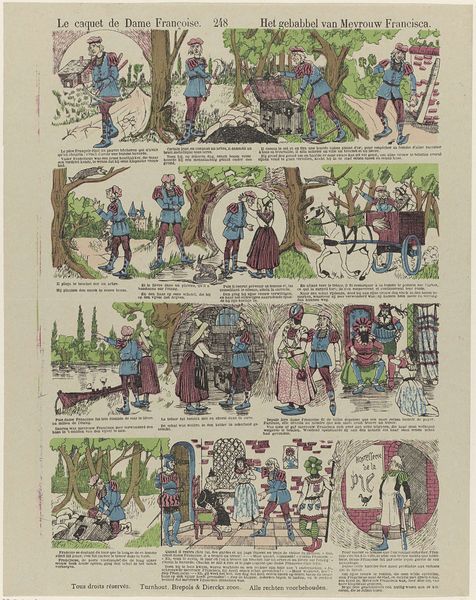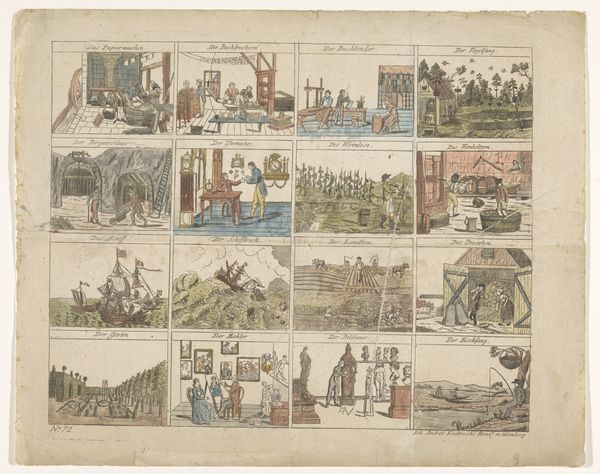
graphic-art, print
#
graphic-art
#
narrative-art
# print
#
figuration
#
folk-art
#
comic
#
line
Dimensions: height 399 mm, width 275 mm
Copyright: Rijks Museum: Open Domain
Curator: Welcome. Before us is "Het spook", or "The Ghost," a printed graphic work dating from 1894 to 1959, credited to Monogrammist JGr and held here at the Rijksmuseum. Editor: It strikes me as delightfully… rough. The linework is bold, and the coloring seems almost haphazard, as though emphasizing expediency over refinement in its production. Curator: Absolutely. Consider the image of the ghost, the supposed entity in the comic strip that follows. Notice how the artist employs conventional imagery associated with haunting: stark white sheets, shadowed figures, elements of classic spectral narrative. How do you perceive its purpose within the social narrative suggested? Editor: Well, looking closely at how these scenes are constructed, one could interpret it as social commentary, perhaps highlighting class dynamics. Look at the panels depicting servants and the nobility – how the labor and leisure are presented, the almost rote actions described below each frame; there’s a clear contrast between their roles. Curator: A critical insight! There's a subtle thread of critique woven through its simplistic depiction. Consider the ghost not just as a frightful specter, but also perhaps as a manifestation of societal unrest or repressed anxieties, a collective imagining made visual, considering, even as a comic, how might "folk art" portray those dynamics? Editor: It brings me to considering mass production and consumption. Prints like these made narrative accessible; it democratized storytelling via affordable visuals. It challenges the notion of ‘high’ art by inserting relatable scenarios into a visual culture for broader public consumption, a method that influences artists still! Curator: Indeed! And consider its staying power: Here we are, decades after its creation, unpacking the layers of meaning still embedded in its simple lines and panels. What a testament to the potency of visual language and social context. Editor: Agreed. It shows us how "low" or inexpensive material can reflect culture back at us, echoing its anxieties, trends and class awareness. This opens questions about whose stories matter and how art is inextricably tied to social currents!
Comments
No comments
Be the first to comment and join the conversation on the ultimate creative platform.
